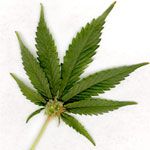Alcohol Withdrawal Syndrome (AWS) refers to an unpleasant and sometimes serious set of symptoms that can occur when someone stops or reduces their alcohol intake after excessively ingesting the drug for weeks, months, or years.
AWS happens because when we consume alcohol our bodies become dependent on the substance and once we suddenly stop the body has a difficult time adapting to the lack of alcohol.
Prolonged drinking suppresses the brain’s neurotransmitters, which control things like feelings of calmness and excitability, and when the drinking stops they are no longer suppressed. They rebound, resulting in a phenomenon called hyper-excitability. This produces the opposite effects of alcohol, such as tremors and anxiety.
Symptoms of the syndrome vary, depending on the person, and they can be anywhere from mild to fatal. Symptoms can appear anywhere from six hours to a few days after the last drink was consumed.
Initially, symptoms may include:
• tremors
• anxiety
• nausea and/or vomiting
• headache
• increased heart rate
• sweating
• irritability
• confusion
• insomnia
• nightmares.
The symptoms may worsen over the next two to three days and persist for weeks.
The most serious form of AWS is called Delirium tremens (“ the DTs”). DTs occur in around 1 in 20 people who are going through a withdrawal from alcohol. Symptoms include:
• extreme confusion and agitation
• fever
• seizures
• tactile hallucinations (itching, burning and numbness)
• auditory hallucinations (hearing non-existent sounds)
• visual hallucinations (seeing non-existent images).
It is important to note that alcohol withdrawal is a medical emergency and should be treated as one even if symptoms are mild. If the condition goes untreated it can even lead to death in some cases.
Treatment for AWS will depend on the severity of the symptoms that are being experienced. Some people can be treated at home under supervision while more serious cases will require the patient to be hospitalised.
Symptoms of AWS are often treated with benzodiazepines (mild tranquillisers) because they calm the hyper-excitability in the same way that alcohol would. Once fully withdrawn, it is important that the person suffering AWS receives the appropriate rehabilitation to address the underlying alcohol issues, so they don’t relapse and begin drinking chronically again.
With the right treatment, the prognosis for otherwise healthy individuals is positive. Most make a full recovery, although sleep disturbances, irritability and fatigue may continue for up to a few months.
The best way to prevent experiencing AWS is simple: do not drink excessively for long periods of time, and when you do drink make sure it’s responsibly. If you think you may currently be dependent on alcohol, seek medical help and do not stop ‘cold turkey’.
If you are experiencing alcohol withdrawals, contact your local hospital or Aboriginal Medical Service. If you know someone who has these symptoms and recently stopped drinking after a long period of time alert them and tell them to pursue professional help.
Fact File
• 39.5% of Australian drinkers consume alcohol on a weekly basis.
• 51.6% of Australian drinkers consume alcohol in excess of the Australian Guidelines (2 standard drinks per day).
• 1 in 6 Australian drinkers consume more than 11 drinks per occasion on a monthly basis.
• The average age at which Australians first tried alcohol was 17 years.
• AWS is most common in people who are heavy drinkers because they have developed a tolerance to alcohol.
• The National Alcohol Indicators Project (NAIP) reports that from 1996 to 2005, an estimated 32,696 Australians aged over 15 years and older died from alcohol-related injury and disease caused by risky/high-risk drinking.







Comments are closed.